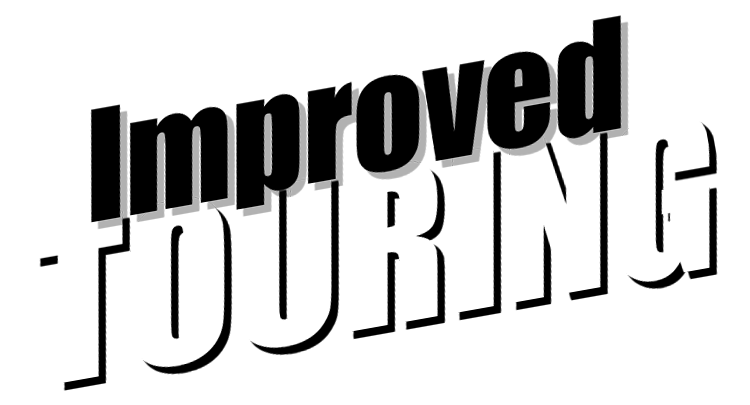Back to the testing process.
Testing this motor w/ different levels of prep and different types/sizes of restrictor seems like a no brainer.
So why is there any time wasted on a chassi dyno or even moreso, why any time wasted arguing about the numbers measured there. Results are only as good as the test done.
Having just jumped into reading this, I can't believe this approach hasn't been explored.
4 motors w/ different levels of build, all get run w/ the flat plate & the SIR. From what I read on the SIR it will top out the performance of the motor regardless of what else is done to it internally (curious to see this). Start at the bottom see what you get, then move up & see how it affects performance.
Motor 1 - stock, minimal if any changes - run it w/ the SIR and the flat plate
Motor 2 - moderate IT change - run it w/ the SIR and the flat plate, compare differences
Motor 3 - fullblown IT motor
Motor 4 - bump compression & better cams (to show the envelope above what can be done legally)
Then while you're at it, better get a decent, or full blown 13B motor on the stand. Probably ought to get a Datsun L28 (L28 or L24 in the 240z?) motor there too.
The idea that SCCA hasn't already done this w/ other cars somewhere between WC and TransAm would suprise me. Should be some previously done tests that can be repeated on the BWM motor.
Meanwhile there are three choices:
Send the E36 to ITE
Raise the Weight
Let them drive off into the winner circle and remember we're racing for bowling trophies.
Testing this motor w/ different levels of prep and different types/sizes of restrictor seems like a no brainer.
So why is there any time wasted on a chassi dyno or even moreso, why any time wasted arguing about the numbers measured there. Results are only as good as the test done.
Having just jumped into reading this, I can't believe this approach hasn't been explored.
4 motors w/ different levels of build, all get run w/ the flat plate & the SIR. From what I read on the SIR it will top out the performance of the motor regardless of what else is done to it internally (curious to see this). Start at the bottom see what you get, then move up & see how it affects performance.
Motor 1 - stock, minimal if any changes - run it w/ the SIR and the flat plate
Motor 2 - moderate IT change - run it w/ the SIR and the flat plate, compare differences
Motor 3 - fullblown IT motor
Motor 4 - bump compression & better cams (to show the envelope above what can be done legally)
Then while you're at it, better get a decent, or full blown 13B motor on the stand. Probably ought to get a Datsun L28 (L28 or L24 in the 240z?) motor there too.
The idea that SCCA hasn't already done this w/ other cars somewhere between WC and TransAm would suprise me. Should be some previously done tests that can be repeated on the BWM motor.
Meanwhile there are three choices:
Send the E36 to ITE
Raise the Weight
Let them drive off into the winner circle and remember we're racing for bowling trophies.

 Thank You for saying this about testing. AB must think we just don't understand how things get done. Even if the SIR can get it done, it is an insult to think rule makes can't spend money to test a stinking theory,but tell a part of membership as a whole to spend $50,000 on apiece of equipment(That $$ is arrived at by 100 BMW drivers spending about $500 on a SIR and related items)
Thank You for saying this about testing. AB must think we just don't understand how things get done. Even if the SIR can get it done, it is an insult to think rule makes can't spend money to test a stinking theory,but tell a part of membership as a whole to spend $50,000 on apiece of equipment(That $$ is arrived at by 100 BMW drivers spending about $500 on a SIR and related items)
 but I don't see how anyone can look someone in the eye, and honestly tell them that the Supra has to run @ 3380#, because that's where the process puts it, but that an E36 gets to run @ 2850#, w/ an SIR, and say that both cars got treated the same.
but I don't see how anyone can look someone in the eye, and honestly tell them that the Supra has to run @ 3380#, because that's where the process puts it, but that an E36 gets to run @ 2850#, w/ an SIR, and say that both cars got treated the same.  ) I thinks they did a good job of trying to balance the IT fields...As I said before, a 325is does fine on track with a passenger...it will do fine with 300# of lead added in creative additional bracing of cage and a couple of lead plates. Again, JMHO...
) I thinks they did a good job of trying to balance the IT fields...As I said before, a 325is does fine on track with a passenger...it will do fine with 300# of lead added in creative additional bracing of cage and a couple of lead plates. Again, JMHO... 

